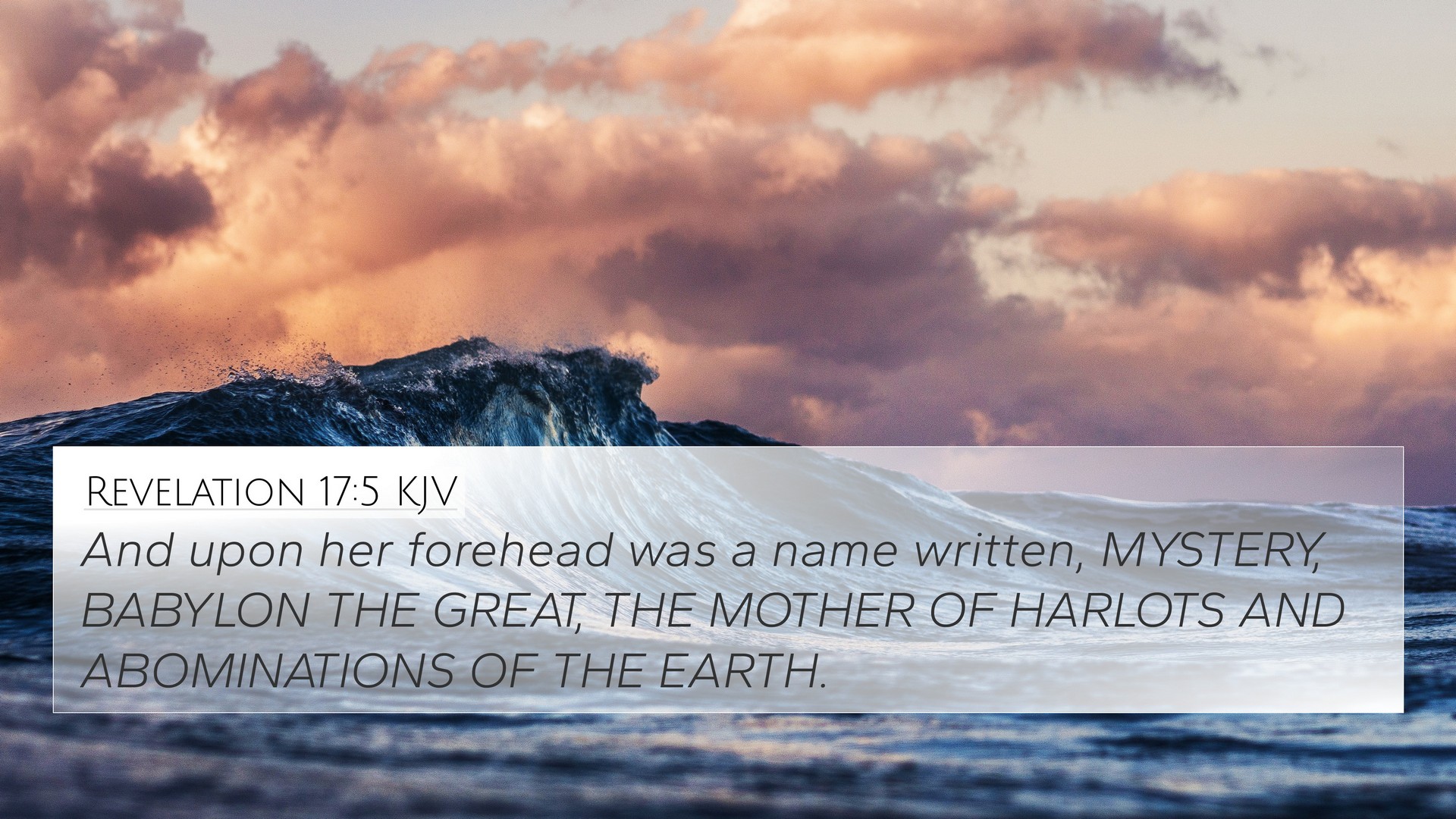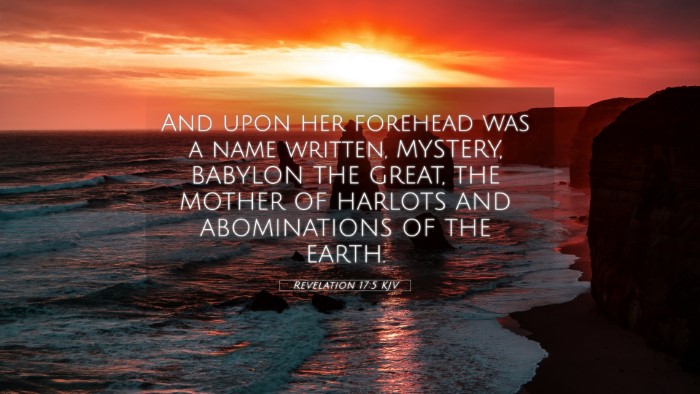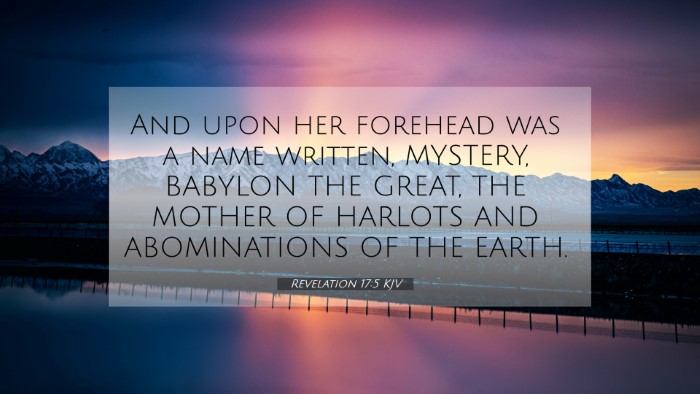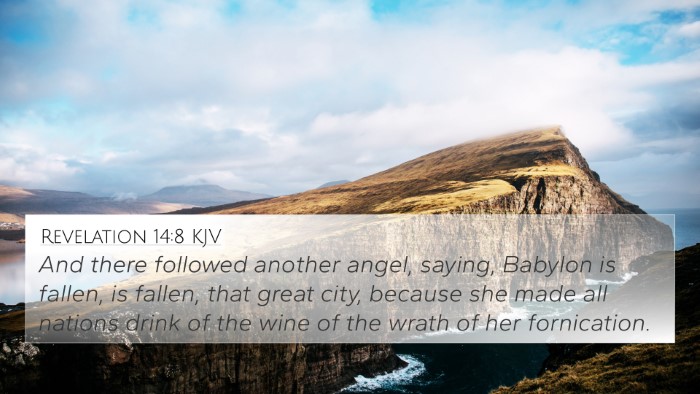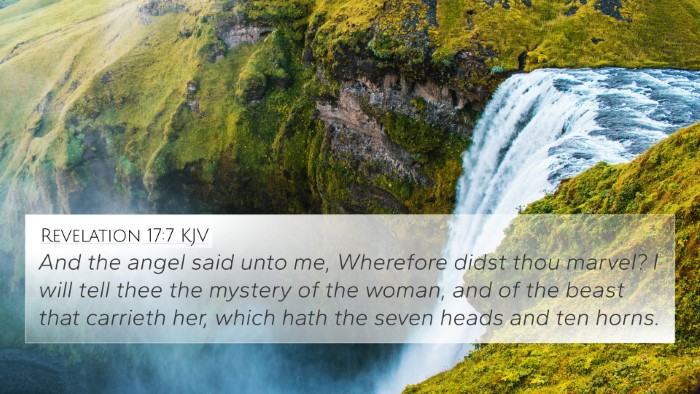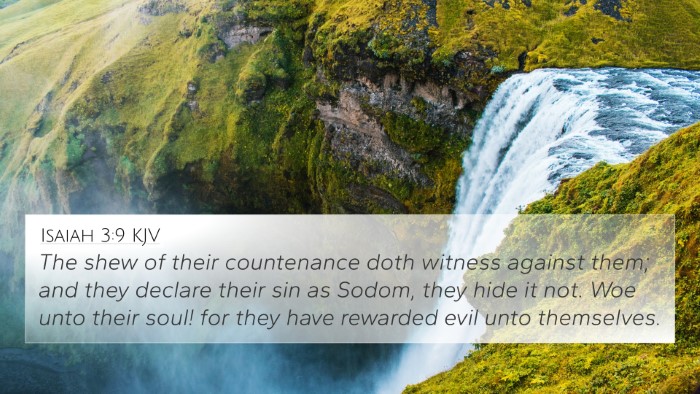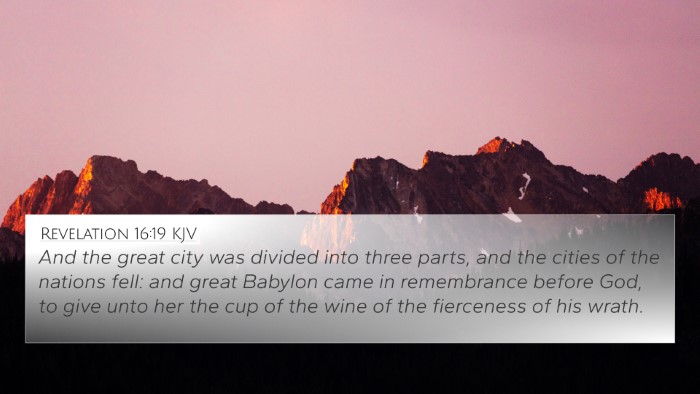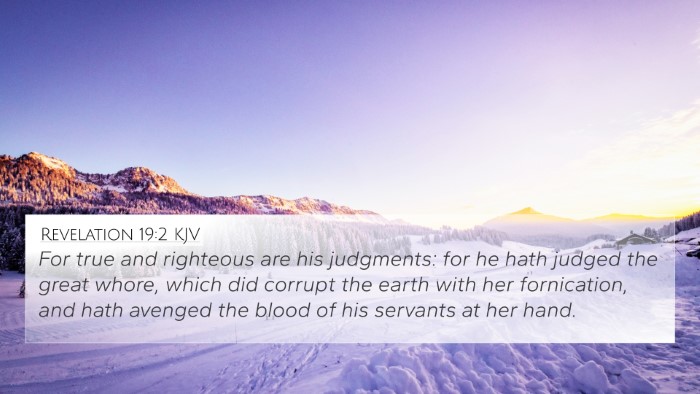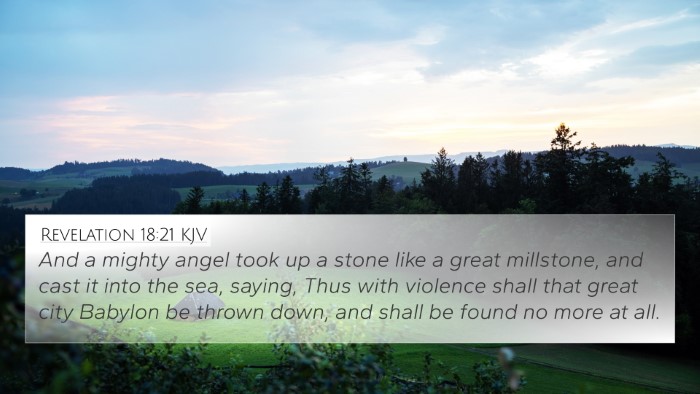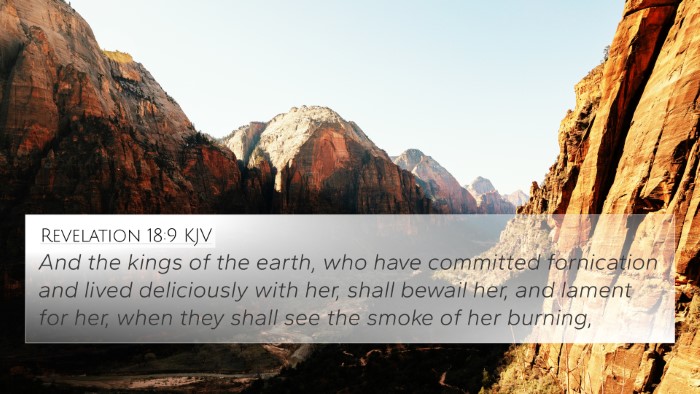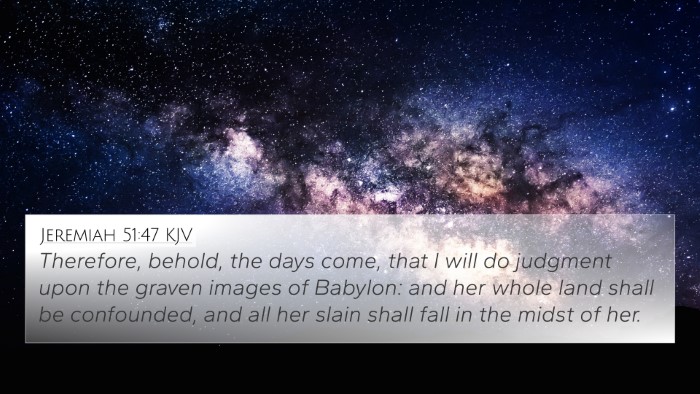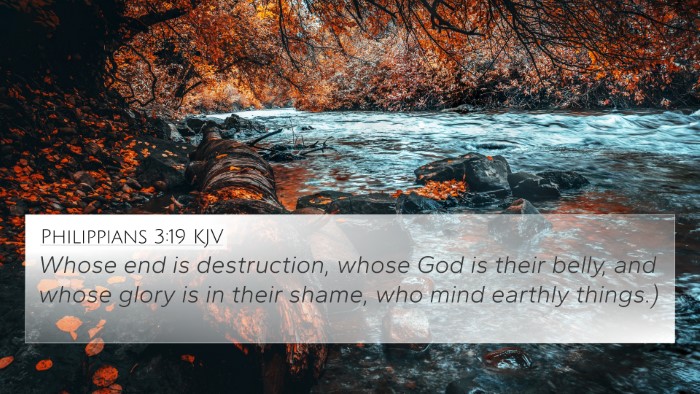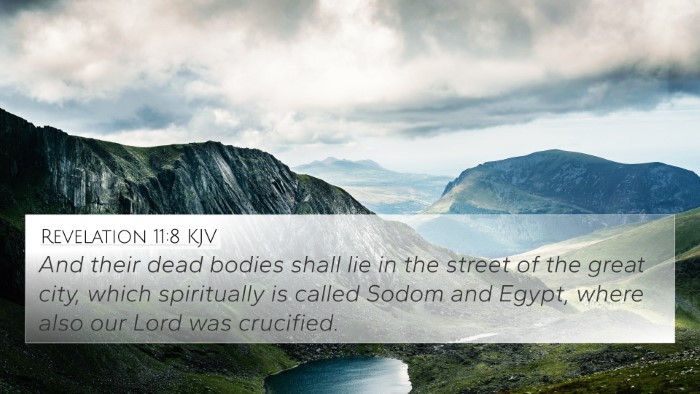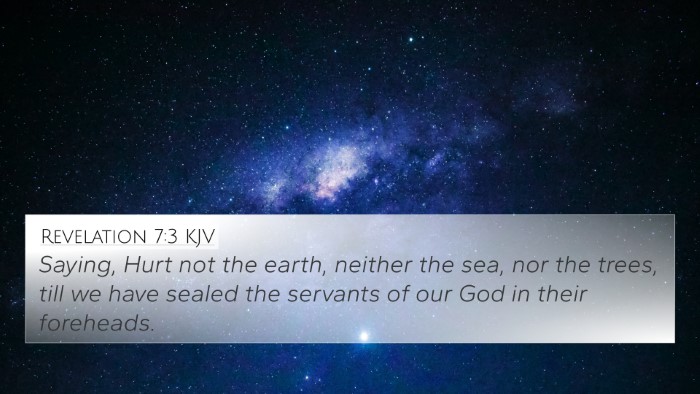Understanding Revelation 17:5
The verse Revelation 17:5 states: "And upon her forehead was a name written, MYSTERY, BABYLON THE GREAT, THE MOTHER OF HARLOTS AND ABOMINATIONS OF THE EARTH."
Overview
This verse is rich in meaning and symbolism, establishing a critical connection with the broader themes of the Book of Revelation and the Bible as a whole. The image of “Babylon” denotes not only literal Babylon but also represents spiritual and moral decay.
Key Insights from Commentaries
-
Matthew Henry:
Henry emphasizes that the depiction of Babylon represents the culmination of idolatry and immorality. The term “Mystery” suggests hidden truths about this entity that are unveiled in Revelation, pointing to the deception inherent within it.
-
Albert Barnes:
Barnes notes that Babylon symbolizes the corrupt systems opposed to God’s truth. The title “Mother of Harlots” indicates that not only is this entity guilty of sin, but she also propagates spiritual adultery—turning people away from God to false idols and teachings.
-
Adam Clarke:
Clarke highlights the prophetic nature of this verse, linking it to historical and future implications of Babylon’s influence over nations and communities, thus serving as a warning to the faithful about engaging with such corrupt ideologies.
Bible Verse Cross-References
Understanding Revelation 17:5 can be enriched by examining its connections with other scripture. Here are key cross-references:
- Jeremiah 51:7: “Babylon was a golden cup in the Lord's hand.” This highlights Babylon’s seductive power in leading nations astray.
- Revelation 18:2: “Babylon the great is fallen, is fallen...” This emphasizes the impending judgment against Babylon.
- Ezekiel 16:30: Refers to Israel as a “harlot,” illustrating the theme of spiritual infidelity.
- Isaiah 47:5-9: Describes Babylon's pride and impending judgment, linking to its downfall.
- 1 John 2:15: “Love not the world, neither the things that are in the world...” This admonition parallels the call to avoid becoming entangled with Babylon.
- Revelation 14:8: Alerts to the fall of Babylon, reinforcing the judgment mentioned in Revelation 17.
- Genesis 10:10: Provides historical context regarding Babylon's foundations in the kingdom of Nimrod.
Connecting Themes
Thematic connections arise through examining how Babylon symbolizes rebellion against God, paralleling various forms of spiritual defiance across scripture. Responding to these themes can provide deeper insights into personal conduct and societal influences.
Bible Verse Parallels
Exploring parallels among various Bible verses enriches understanding. The multi-faceted portrayal of spiritual corruption, idolatry, and the resulting consequences stands as a warning throughout the Bible.
Tools for Bible Cross-Referencing
To fully grasp the implications of Revelation 17:5, tools for Bible cross-referencing can be immensely useful:
- Utilizing a Bible concordance allows for straightforward searches for terms like “Babylon” and related themes.
- A cross-reference Bible study can help identify related passages and explore their implications together.
- Engaging with Bible reference resources can lead to broader contexts, yielding rich insights.
Final Thoughts
Revelation 17:5 serves not just as a standalone verse but as part of the inter-Biblical dialogue that addresses themes of idolatry, corruption, and divine judgment. Its understanding is deepened through study and cross-referencing with other biblical texts.
How to Use Bible Cross-References
When seeking to understand any specific verse, consider how it interacts with others. For Revelation 17:5, investigate both its thematic elements and prophetic warnings found throughout scripture.
Conclusion
Revelation 17:5 resonates with critical meanings about moral corruption and the consequences of straying from divine truth. As believers engage with this scripture, they are encouraged to reflect on personal faith and the broader implications of spiritual corruption within society.
